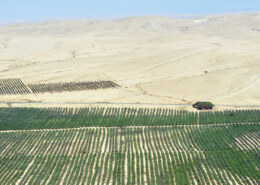How can AI be used to combat climate change and environmental degradation?
Deforestation is the removal of forests usually as a result of deliberate human action such as cutting down trees for timber, fuelwood or to clear land for agriculture, urbanization or other purposes. Contributions of Deforestation to climate change - Disrupts the carbon cycle by releasing stored caRead more
Deforestation is the removal of forests usually as a result of deliberate human action such as cutting down trees for timber, fuelwood or to clear land for agriculture, urbanization or other purposes.
Contributions of Deforestation to climate change –
- Disrupts the carbon cycle by releasing stored carbon dioxide (CO2) through tree cutting and decomposition.Carbon cycle disruption releases excess CO2, trapping heat ,and accelerating global warming and climate change.
- Releases greenhouse gases through tree cutting, decomposition and soil disturbance, emitting carbon dioxide (55-65%), methane (20-25%) and nitrous oxide (5-10%), totaling 15-20% of global.Greenhouse gas emissions trap heat, warming the planet, and driving climate change and weather extremes.
- Disrupts climate regulation by removing forests that moderate temperature, precipitation and weather patterns, altering global water cycles and exacerbating climate extremes, impacting regional and global climate stability significantly.
Deforestation’s devastating impact on climate regulation, biodiversity and ecosystems necessitates urgent action, including sustainable land use practices, reforestation efforts and d policy changes to protect our planet’s precious forests.
See less


Climate change refers to long-term changes in the Earth's climate, such as temperature, precipitation, wind patterns, and other climatic variables. While certain changes occur naturally, current data indicates that human actions, notably using fossil fuels and deforestation, play a significant role.Read more
Climate change refers to long-term changes in the Earth’s climate, such as temperature, precipitation, wind patterns, and other climatic variables. While certain changes occur naturally, current data indicates that human actions, notably using fossil fuels and deforestation, play a significant role. These activities raise greenhouse gas concentrations in the atmosphere, contributing to global warming and a few other consequences such as rising sea levels, and ecological changes.
See lessArtificial intelligence (AI) has emerged as a crucial ally in the battle against climate change, analyzing vast amounts of data, detecting patterns, and making accurate predictions. Machine learning algorithms spot trends and provide precise forecasts about future climate scenarios, aiding policymakers in planning effective measures. It also helps integrate and manage renewable energy sources by predicting production based on weather patterns and stabilizing energy networks. AI-powered environmental monitoring improves real-time analysis for deforestation, air pollution, and wildlife conservation, thereby enhancing regulatory compliance and ecosystem protection. While, AI’s high energy consumption, resource intensity, data privacy concerns, potential biases, system vulnerabilities, and risk of economic displacement pose significant challenges. In conclusion, AI holds significant potential in the fight against climate change however, addressing the associated challenges is crucial to ensure that AI’s application in climate.